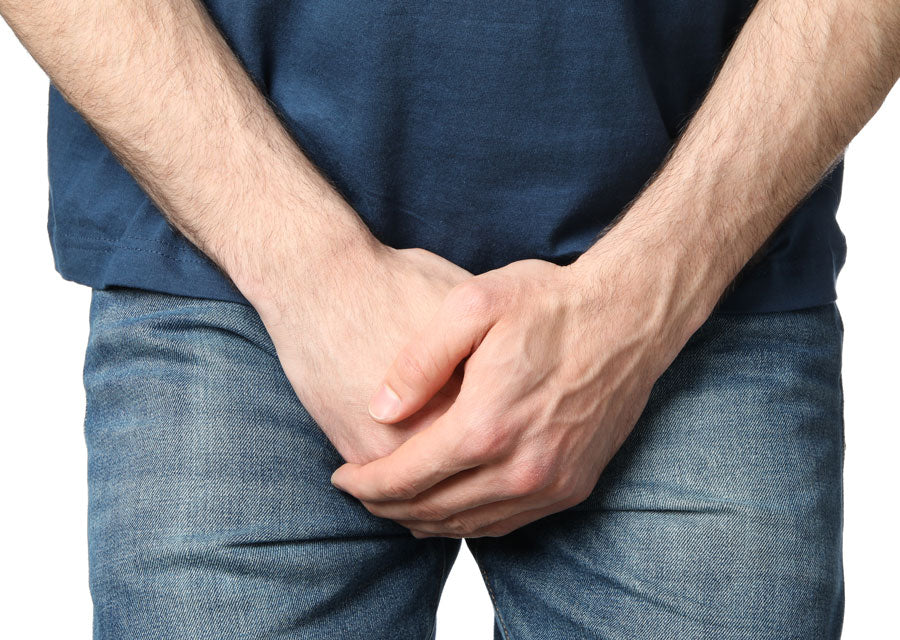What You Need to Know About Male Orgasms

Written by: The in2 Team - By Virility Medical
We often think of the male orgasm as a pretty simple affair that starts with an erection and ends with ejaculation, but there can be more to it than that. Men can have different types of orgasms and some men have trouble with the Big O whether that’s coming too soon or taking too long.
This article can help you understand what happens in your body when things go right and offer ideas for what to do when your orgasms are not the thrilling, bliss-inducing apogee that we all hope they will be.
What is an orgasm?
An orgasm is often called a climax because it’s the culmination of sexual excitement and the release of built-up sexual tension. Both men and women experience rhythmic contractions of the pelvic muscles during an orgasm which is often (hopefully always) accompanied by a sensation of pleasure that spreads throughout the whole body.
In men, orgasms are most often accompanied by ejaculation or the release of semen from the urethra (the hole in the tip of the penis which is also where urine comes out).
No two men experience orgasm in exactly the same way and each orgasm you experience may feel a little different. While some may be earth-shatteringly fantastic, others may feel good but not great. That’s okay, you can always try again a little bit later.
How do men orgasm?
In the 1960s, sex researchers William Masters and Virginia Johnson published groundbreaking research on sexual behavior. The pair had studied over 10,000 people/couples and learned that while there is a lot of variation, most people go through a pretty predictable sexual response cycle. This research has been challenged and expanded upon since, but most experts agree with these four stages of sexual response.
- Excitement or arousal. In this stage, you get turned on. This can be the result of physical touch, visual stimulation (like porn or the sight of your partner naked), or even just a stray sexy thought. In the arousal phase your heart starts beating faster, your nipples get hard, your skin flushes, and blood rushes to your penis and testes. This causes an erection and often some pre-cum leaks out.
- Plateau. Whether you’re having penis-in-vagina intercourse or enjoying some oral sex, this is the stage where you’re feeling all the sensations of sex. During this phase, all of the physical responses of the arousal stage keep going, muscle tension increases, and breathing and heart rate can continue to increase.
- Orgasm. Though often seen as the goal of sex, this is actually the shortest stage in the cycle because most orgasms last only a few seconds. In this stage everything reaches its peak and then all of the tension releases in a burst of involuntary muscle contractions. For men these contractions are felt in the muscles at the base of the penis. Male orgasms are usually—but not always—accompanied by ejaculation.
- Resolution. After all of this, your body needs a little break. During this phase, your pulse and heartrate lower, your breathing returns to normal, and your erection goes down. Because of hormones released during sex and orgasm, many people feel an overall sense of wellbeing during this phase. While some men can be ready to go again within minutes others need a longer time to recover before their body is ready to start the cycle again. This pause is often referred to as the refractory period.
Are ejaculation and orgasm the same thing?
No. Most men experience ejaculation and orgasm simultaneously—with the release of sexual tension comes the release of semen—but these are two different physiological events. Men can orgasm without ejaculating and ejaculate without orgasming.
An orgasm without ejaculation is often called a retrograde orgasm. When this happens it’s usually because the sphincter between your urethra and your bladder (which prevents you from peeing and coming at the same time) fails to close. The semen that was going to come out of the penis, goes into the bladder instead and you have a dry orgasm.
This shouldn’t cause harm (the semen will come out the next time you urinate), but if it happens frequently, it’s a good idea to check with a health care provider to make sure nothing else is going on.
Are there different types of male orgasms?
Every orgasm feels different and while it can be tempting to label them based on what brought you to the moment and whether you ejaculated, that’s not particularly helpful, with one notable exception—the P-spot orgasm.
We talk a lot about the G-spot which is an area of spongy tissue inside the vagina that seems to have a lot of nerve endings. When found and stimulated, the G-spot can lead women to a very intense orgasm that feels different from others. It turns out that men have a similar spot near their prostate (hence the nickname P-spot).
Your prostate is a gland located between your penis and bladder, just behind your rectum. It’s about the size of a walnut. You or your partner can find it by inserting a finger or sex toy into your anus. Start slow and use lube. When you’ve found it, gently massage it to help the pleasure build.
(Note: never put anything into the anus that doesn’t have an anchor that stays outside. Fingers are fine but stay away from household objects as these can get pulled into the rectum and require medical help to remove. If you use a sex toy, get one like a butt plug that is specifically designed for anal play.)
What if I have problems having an orgasm?
A lot of men have problems with their orgasm at some point in their life. If it happens once or twice you can chalk it up to nerves, too much alcohol, not enough sleep, or a cold coming on. But if you are experiencing any of these issues frequently consider talking to a health care provider and looking for a solution.
- Not getting hard enough. Though technically a rock-hard erection isn’t necessary for orgasm, erectile dysfunction can interfere with sex and make it more difficult to climax. If you’re having trouble getting or keeping an erection, talk to your health care provider about treatment options including medications.
- Taking too long to come. Some men experience delayed ejaculation (meaning they require more than 30 minutes of direct stimulation to climax) or anorgasmia (meaning they can’t orgasm at all). While there are sexual techniques that you and your partner can try to make you come faster, having trouble orgasming can be a side effect of medications (like anti-depressants) or a sign of an underlying health issue. Start by talking to your health care provider.
- Climaxing too soon. Ejaculating too soon is one of the most common sexual health complaints for men. In fact, between 30% and 40% of men say this has happened to them. Try not to worry about it or be embarrassed (really, worry can get you trapped in a cycle of coming too soon). Instead look for solutions. See our article on techniques for delaying orgasm and try the innovative in2. This wearable device is clinically proven to help men prolong sexual intercourse by gently contracting the pelvic muscles. It can give you more control over ejaculation without interrupting sex or needing a prescription.
Orgasms are fun, free, and good for your health whether you do them alone or with a partner. While they might not all be mind-blowing, even mediocre orgasms are pretty good. Our best advice is usually just to relax and enjoy them.








